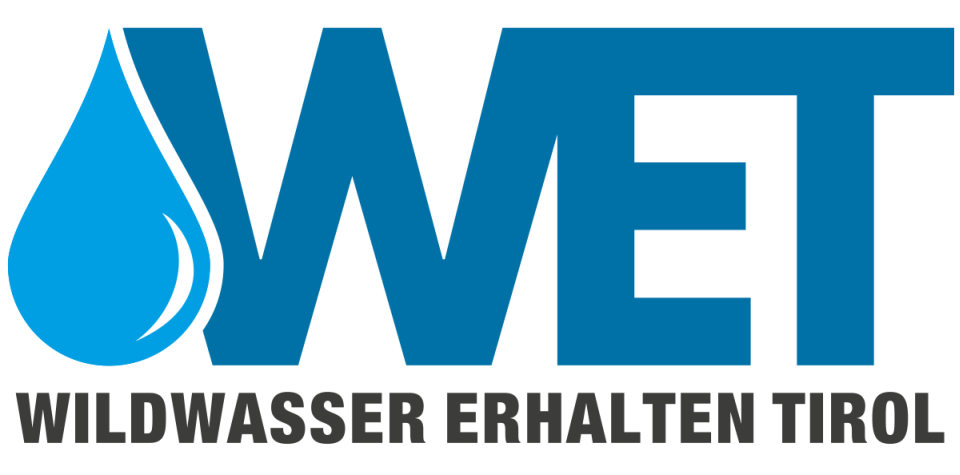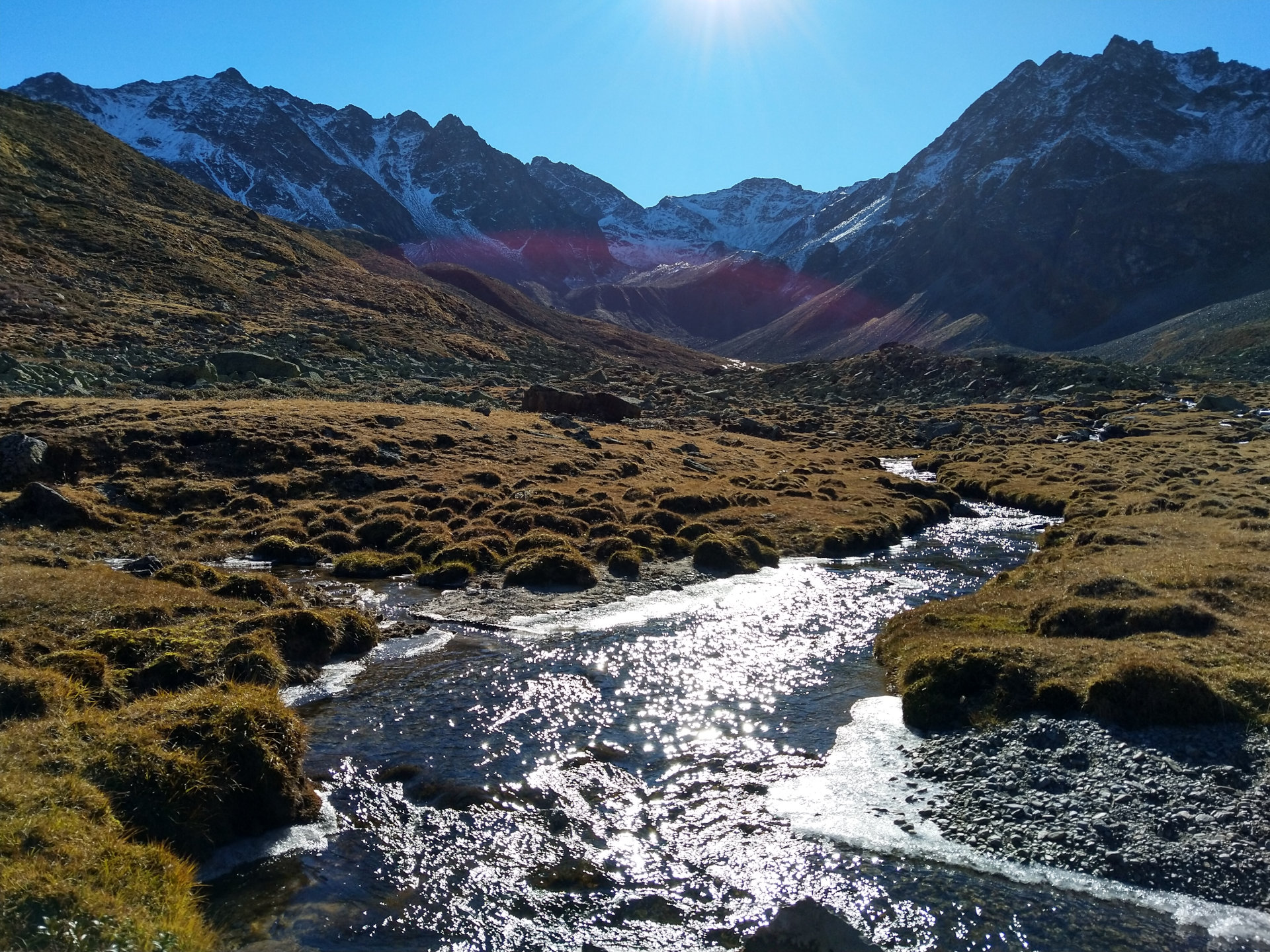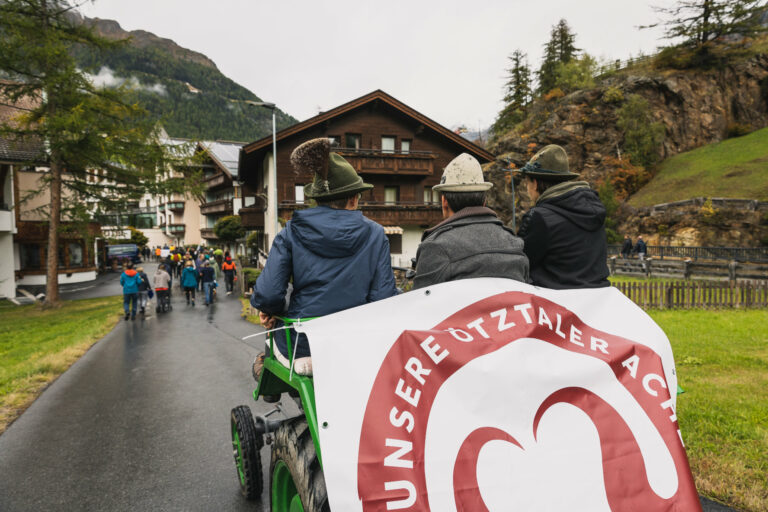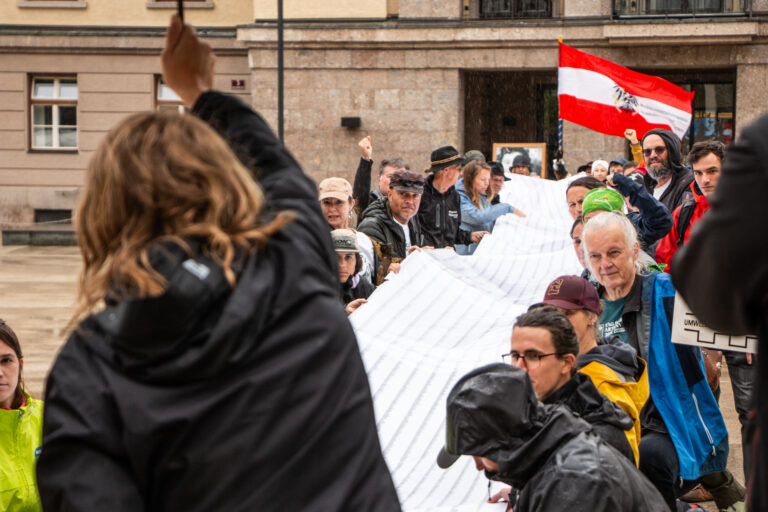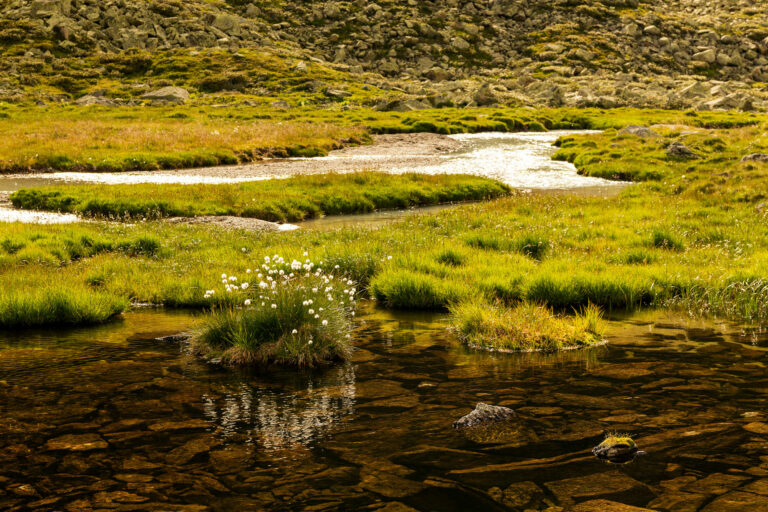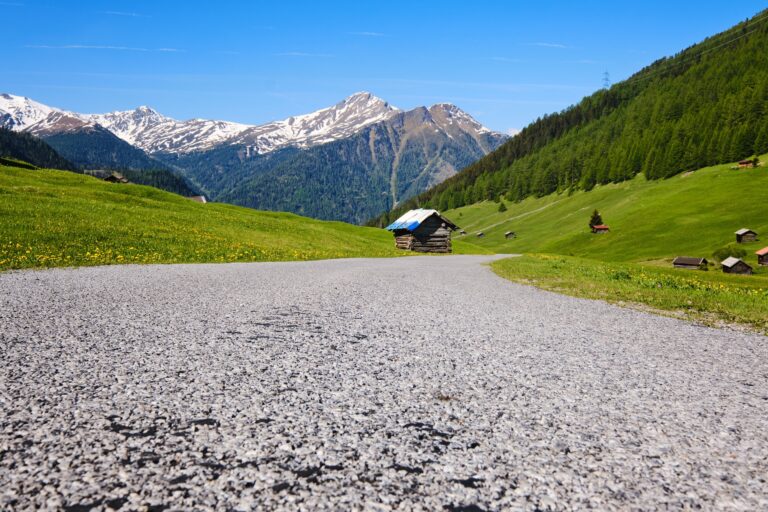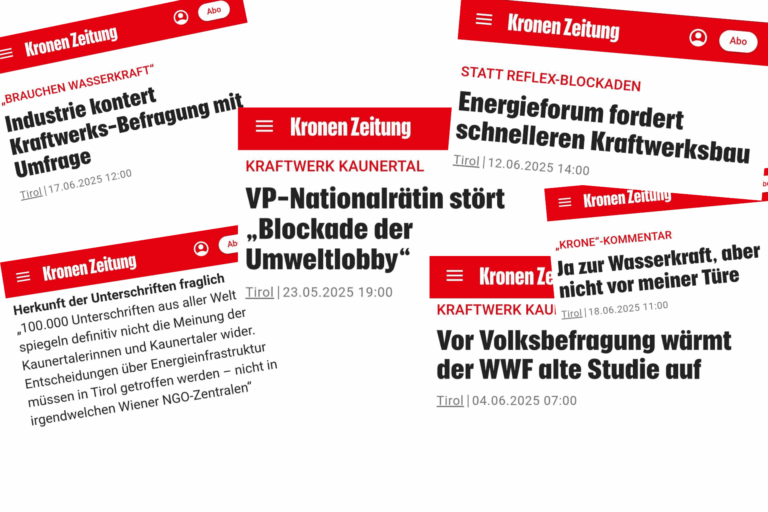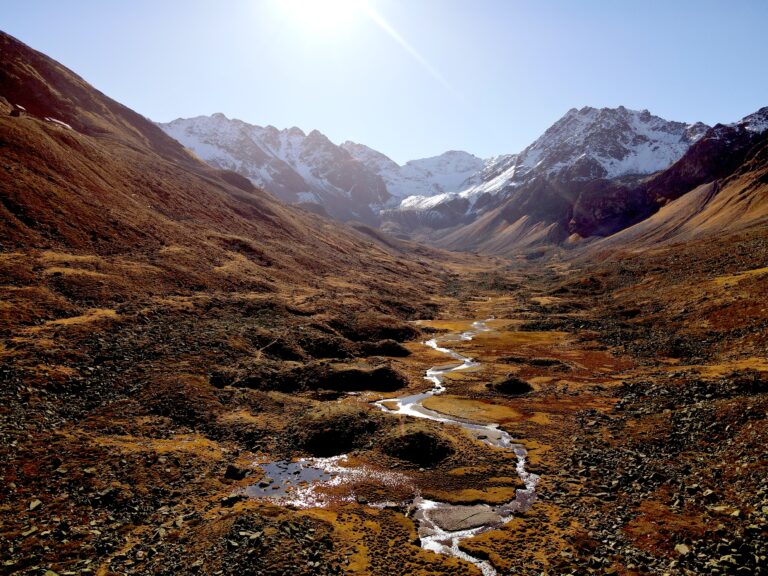Kaunertal Power Plant Expansion – An Overview
For those who may be new, we want to summarize the Kaunertal Power Plant Expansion project in the Tyrolean Oberland. Be sure to check out our video, where Marianne Götsch from WWF explains the project (German audio with English subtitles).
The basic plan is to “expand” the existing Kaunertal pumped storage power plant, or rather, to build a power plant network that would span almost the entire Tyrolean Oberland. Three new power plants would be built, a large portion of the Ötztaler water would be diverted from the valley, and an almost untouched alpine high valley would be flooded.
Overview of the Existing Facility
The Kaunertal pumped storage power plant was built in the 1960s and is fed by a large reservoir (Gepatsch reservoir). It receives water from 11 streams originating from 3 different catchment areas, which are directed into the reservoir (or directly into the pressure shaft). To generate electricity, the water is discharged to Prutz, which is approximately 700m lower, and then into the River Inn. The power plant has an annual production capacity of 661 GWh (which is quite significant). Its notable feature is that the Gepatsch reservoir can store enough water to shift a portion of its electricity production from summer to winter months (when run-of-river power plants generate less electricity due to low river levels).
Expansion Plans in Detail
Both the regional government and reputable media often state that the Kaunertal power plant is to be “expanded into a pumped storage facility.” However, this oversimplifies the plans; three new large power plants with different functions are proposed.
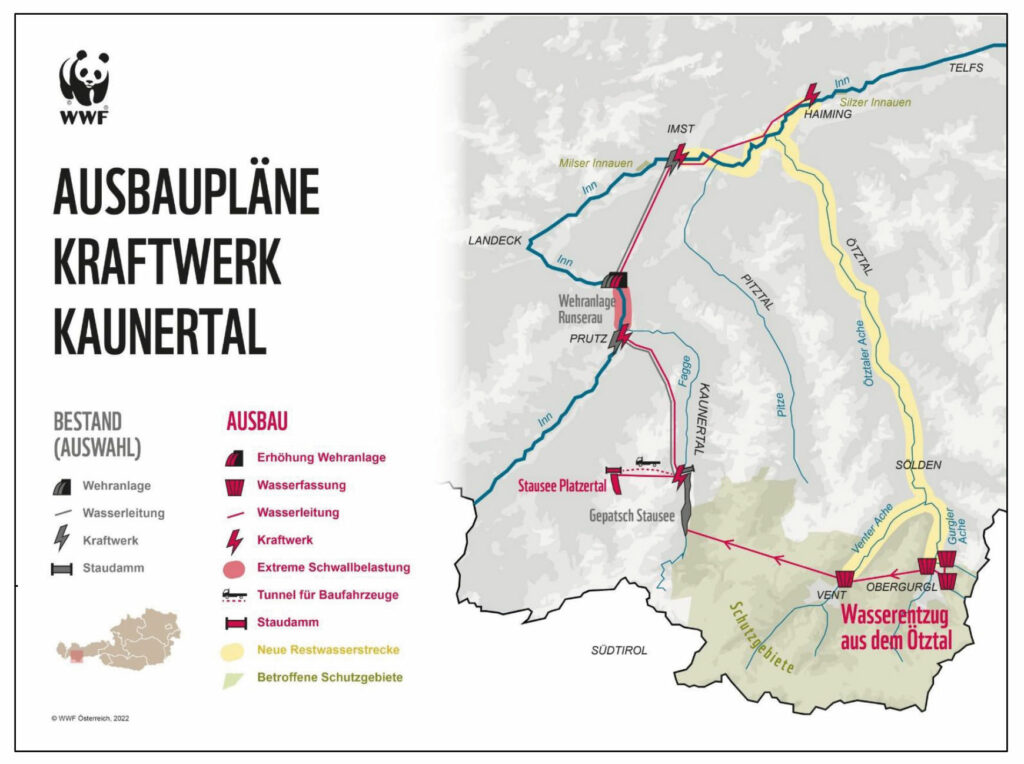
The Pumped Storage Facility & the Platzertal
One of the proposed facilities is intended to be a pumped storage plant. Located west of the existing Gepatsch reservoir, on the other side of the mountain, is the Platzertal at approximately 2100 meters above sea level. It is planned to be dammed with a dam about 119 meters high and 450 meters wide and then flooded to enable pumping between the Gepatsch reservoir and the new reservoir. The power plant for this purpose is called Versetz and is expected to have a capacity of around 400MW in turbine operation.
However, this pumped storage facility is not necessarily needed, according to an energy-economic analysis. Firstly, because the density of storage and pumped storage power plants in western Austria is already very high. Secondly, this form of energy storage is increasingly in competition with battery storage. The analysis was conducted by Dr. Jürgen Neubarth on behalf of WWF, and it can be found here. Furthermore, sacrificing an entire valley to store energy is no longer in line with current technological standards. Other energy companies simply connect existing reservoirs instead. Moreover, the function of the Gepatsch reservoir as a seasonal storage would even be compromised by the pumped storage power plant, as space would need to be kept free in the Gepatsch reservoir to accommodate the volume from the Platzertal reservoir.
The Platzertal is home to a highly alpine moor and wetland landscape, much of which would be lost. It is a biodiversity hotspot and also stores a significant amount of CO2, which would be released if the Platzertal were turned into a reservoir.
Using the Ötztal Water for Profit
In addition to the transfer pump storage, two more power plants are planned to be built, which are supposed to be operated with water from the Gepatsch Reservoir, one in Prutz (Prutz II) and one in Imst (Imst II). Currently, about 50m³/s of water are discharged to Prutz, and in the future, an additional 70m³/s are planned to be added. The pressure shaft from the Gepatsch Reservoir to Prutz is already designed to handle about 120m³/s of water. The additional water needed is supposed to come from the Ötztal, located to the east of the two valleys. Here, the Venter Ache and Gurgler Ache are to be captured, and their water is to be directed into the Gepatsch Reservoir, up to a total of 80m³/s. However, this enormous amount of water is no longer needed to fill the Gepatsch reservoir for winter, as the streams captured for the existing power plant already accomplish this. Currently, the Gepatsch Reservoir can be completely filled about 2.3 times per year, with water from the Ötztal, it could be filled about 4.4 times. This represents a huge surplus, mainly allowing for additional electricity generation in the summer. Additional electricity that would further amplify the surplus of Tyrolean hydropower in the summer, and would therefore largely be exported.
For the Ötztal, its population, agriculture, and tourism, these diversions would mean a significant water loss. This cannot be compensated with money because water can only be compensated with water. And it would be fixed for 90 years if the project were to be approved. The ecologically valuable stretches of the Venter, Gurgler, and Ötztaler Ache would be destroyed and degraded to residual water channels. Up to 80% of their water would be missing.
major construction site Spanning Multiple Years in the Kaunertal Valley
The Kaunertal will essentially serve as the central access route for the construction site. All heavy vehicle traffic necessary to supply the construction site in the Platzertal will pass through the Kaunertal and then continue to the Platzertal via a specially constructed tunnel. Additionally, huge material depots are required, with a planned total area of 16.8 hectares allocated in the Kaunertal area.
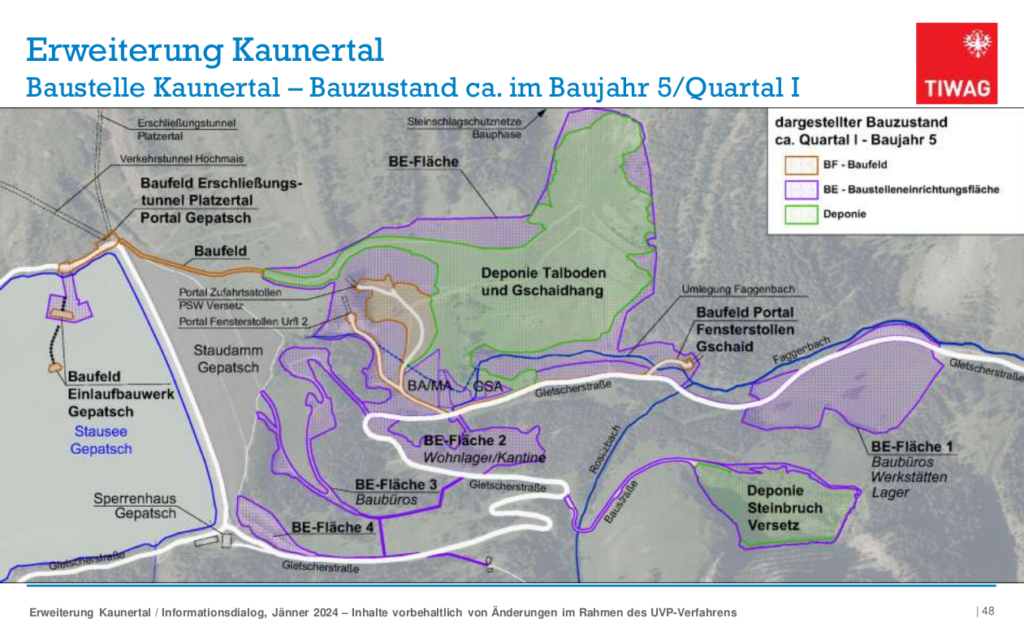
Impact on the River Inn
In the future, one hundred and twenty cubic meters of water per second are planned to be discharged from the Gepatsch Reservoir into the River Inn. This water will be directed into the Inn above the existing Runserauer Weir without compensation for the natural flow. Consequently, whenever turbines are turned on or off to produce more or less electricity (depending on the electricity market), this change in water volume will directly affect the riverbed of the Inn. This will turn the section between Prutz and the Runserauer Weir, located 4km downstream, into a surge retention basin, resulting in ecological devastation.
At the Runserauer Weir, this water would then be immediately withdrawn and discharged downstream to Imst. In Imst, the plans for expanding the Kaunertal hydroelectric power plant intersect with the plans for the Imst-Haiming power plant, which intends to divert water from Imst further to Haiming and return it to the River Inn there.
Key Components of the Project
Here is a list of what would be constructed, including some figures on the impacts:
- 2 Tyrolean weirs as water intakes on the Königsbach and Ferwallbach (both tributaries of the Gurgler Ache)
- 2 concrete barriers (each 25m high arched walls serving as water intakes on the Gurgler and Venter Ache)
- Deterioration of the Venter Ache, Gurgler Ache, and Ötztaler Ache into residual water channels and the associated massive interventions in the water management of the entire Ötztal Valley – a total of approximately 90 river kilometers will become residual water stretches
- A new reservoir in the Platzertal with a usable capacity of around 42 million cubic meters and a 119m high dam
- Destruction of the Platzertal High Valley, particularly 6.3 hectares of moorland
- 3 new power plants (Versetz, Prutz 2, and Imst 2)
- 4 new tunnels totaling approximately 47km in length
- Destruction of the ecological functionality of the Inn River over a length of approximately 4.2 kilometers
- Establishment of numerous construction sites and construction support facilities during the years-long construction phase, and various accompanying measures such as huge surge compensation basins or material depots covering a total area of 16.8 hectares
Sources & Links
- (1) Energiewirtschaftliche Einordnung Pumpspeicherkraftwerk Versetz mit Speicher Platzertal, Studie im Auftrag des WWF Österreich, Dr. Jürgen Neubarth, 2023
- (2) TIWAG Website: Ausbau KW Kaunertal
- (3) TIWAG- Tiroler Wasserkraft AG, Innsbruck; Ausbau Kraftwerk Kaunertal – Stellungnahme der Landesumweltanwaltschaft gemäß § 5 Abs 4 UVP-G 2000, 2012
- (4) Berufung gegen den Feststellungsbescheid der Tiroler Landesregierung bezüglich des Vorhabens „Wasserkraftanlage Ötztaler Ache, Tumpen – Habichen“, 2013
- (5) Hydropower Sustainability Assessment Protocol (HSAP) – Kaunertal Expansion Project, 2017
- (6) Freirad Radiopodcast Lichtgabel: Ötztal – Ohne Wasser, Regula Imhof, 2019
- (7) TIWAG – Ausbau Kraftwerk Kaunertal (AK) – Stellungnahme des Landesumweltanwaltes zur vorliegenden UVE gemäß § 5 Abs 4 UVP-G 2000, 2019
- (8) TIWAG Informationsdialog Oberes Gericht, Jänner 2024, Prutz
